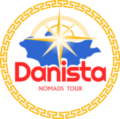The Flaming Cliffs site (also known as Bayanzag (Chinese: 巴彥扎格), Bain-Dzak or Bayn Dzak)[1] (Mongolian: Баянзаг rich in saxaul), with the alternative Mongolian name of Mongolian: Улаан Эрэг (red cliffs), is a region of the Gobi Desert in the Ömnögovi Province of Mongolia, in which important fossil finds have been made. It was given this name by American paleontologist Roy Chapman Andrews, who visited in the 1920s. The area is most famous for yielding the first discovery of dinosaur eggs. […]
Lake Khuvsgul Lake Khuvsgul Coordinates 51°06′N 100°30′ECoordinates: 51°06′N 100°30′E Type Ancient lake, Rift lake Primary outflows Eg River Basin countries Mongolia Max. length 136 km (85 mi) Max. width 36.5 km (22.7 mi) Surface area 2,760 km2 (1,070 sq mi) Average depth 138 m (453 ft) Max. depth 267 m (876 ft) Water volume 480.7 km3 (115.3 cu mi) Surface elevation 1,645 m (5,397 ft) Islands Modon khui, Khadan khui, Modot tolgoi, Baga khui Settlements Khatgal, Khankh Name inChakhar […]
From Wikipedia, the free encyclopedia Ongi Monastery Ongi Monastery,Saikhan-Ovoo, Dundgovi Mongolia Religion Affiliation Tibetan Buddhism Location Location Saikhan-Ovoo, Dundgovi, Mongolia Location within Mongolia Geographic coordinates 45°20′23.31″N 104°0′15.4″ECoordinates: 45°20′23.31″N 104°0′15.4″E Architecture Style Chinese, Mongol and Tibetan influences Date established 1660 Ongi Monastery (Mongolian: Онгийн хийд, Ongiin Khiid) is the collective name for the ruins of two monasteries that face each other across the Ongi […]
From Wikipedia, the free encyclopedia Khongoryn Els sand dunes Khongoryn Els (Khongor Sand, Chinese: 洪戈尔沙漠) also called Duut Mankhan is popularly known as the “Singing Sands”. It lies within the Gobi Gurvansaikhan National Park in Mongolia. The sand dunes extend to over 965 square kilometres (373 sq mi) area.[1][2][3] Location The dunes extending up to the foot of the high Altai Mountains range,[4] lie about 180 kilometres […]
From Wikipedia, the free encyclopedia Tövkhön MonasteryТөвхөн хийд Tövkhön Monastery, Mongolia Religion Affiliation Tibetan Buddhism Location Location Orkhon Valley, Mongolia Country Mongolia Location within Mongolia Geographic coordinates 47.012215°N 102.254992°ECoordinates: 47.012215°N 102.254992°E Architecture Style Chinese, Mongol and Tibetan influences Founder Zanabazar Date established 1648 Tövkhön Monastery (Mongolian: Төвхөн хийд, Töwhön híd), one of Mongolia’s oldest Buddhist monasteries, is located on the […]
Kharkhorin (Mongolian: Хархорин) is a town and sum (district) center in Övörkhangai Province in Mongolia. The sum population was 13,828 (1994), 13,964 (2000), and 14,765 (2017). The population of Kharkhorin town itself was 14,765 in 2017 and covered an area of 20.5 km2. Kharkhorin is located at the lower end of the upper valley of the Orkhon River which is included within UNESCO’s World Heritage […]
Your E-Visa To Be Ready In 3 Steps The Government of Mongolia has declared 2023-2025 as the “Years to Visit Mongolia,” and as a result, the list of countries eligible for Mongolian e-visa applications has been updated to include 99 countries. This list includes European countries, Australia, and New Zealand, among others. Citizens of the […]
The Bactrian camel (Camelus bactrianus), also known as the Mongolian camel or domestic Bactrian camel, is a large even-toed ungulate native to the steppes of Central Asia. It has two humps on its back, in contrast to the single-humped dromedary.[a] Its population of 2 million exists mainly in the domesticated form.[2] Their name comes from the ancient historical region of Bactria.[3] Domesticated Bactrian camels have served as pack animals in inner Asia since ancient times. With […]
Mongolian shamanism (Mongolian: Бөө мөргөл — Böö mörgöl), more broadly called the Mongolian folk religion,[1] or occasionally Tengerism,[2][note 2] refers to the animistic and shamanic ethnic religion that has been practiced in Mongolia and its surrounding areas (including Buryatia and Inner Mongolia) at least since the age of recorded history. In the earliest known stages it was intricately tied to all other aspects of social life and to the tribal organization of Mongolian society. […]
Mongolian cuisine is much influenced by the continental climate that dominates the region, and also a bit by the Russian and Chinese cultures. Meat and dairy form the staple diet of this nomadic cuisine, with the use of vegetables being limited. The meat of horse, yak, beef, lamb and even camel is consumed as delicacies. […]










